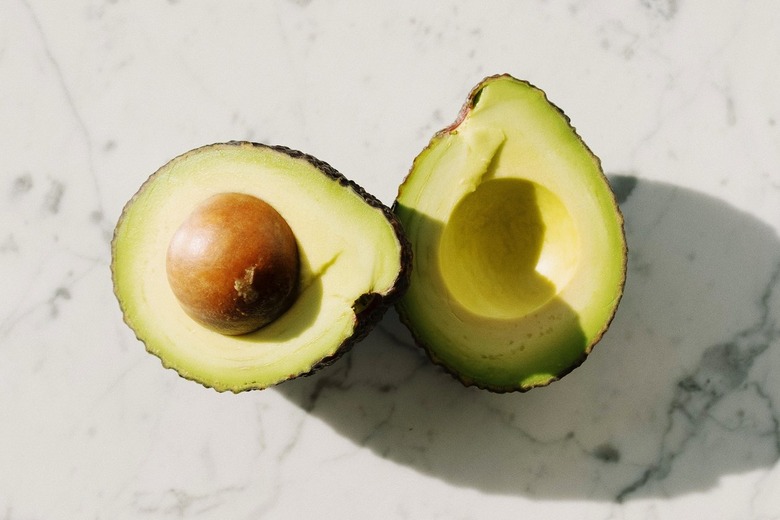You Might Be Storing Both Ripe And Unripe Avocados Wrong
Known for their creamy texture and buttery flavor, avocados are some of the most versatile foods you can keep in the kitchen. The only catch? Without proper storage, avocados can go bad in the blink of an eye.
So, in the name of all things avocado, we asked experts for their best tips and techniques. Ahead, learn how to store avocados, so you can have your guac and eat it, too.
How to Store Unripe Avocados
How to Store Unripe Avocados
According to Kimberly Baker, Ph.D., R.D., L.D., director of the food systems and safety program team at Clemson University Extension Service, unripe avocados should be stored whole (uncut) at room temperature. They should also be stored away from direct sunlight, says Oscar Hernandez, chef and culinary director of Tacombi, a Mexican food and beverage brand.
When stored in this way, avocados will ripen in about seven days, adds Hernandez. But if you'd like to speed things up, "store it in a paper bag to reduce [the ripening] process to about four days," he suggests.
On that note, how do you know when an avocado is ripe and ready to eat? "Ripe avocados have skin that ranges from dark green to black," Baker tells Hunker. It should also yield slightly to gentle pressure.
How to Store Ripe Avocados
How to Store Ripe Avocados
Okay, so your avocados are ripe — but you're not ready to eat them. In this case, it's best to store them in the fridge, as the cold will slow down the ripening process, says Hernandez. This will prevent the avocado from rotting too quickly, he adds.
If your ripe avocados are already cut? The flesh will quickly turn brown if they're not stored properly. And while brown avocado flesh is still safe to eat, it can have an unappealing texture.
A quick explainer: Avocado browning is due to a process called oxidation. Basically, the flesh contains compounds that, when exposed to oxygen, create a brownish pigment called melanin. (And yes ... that's the same melanin that's also found in humans!)
That said, cut avocados should be stored in a way that limits oxygen exposure. Your best bet is store them in the refrigerator, covered in plastic wrap — or, for a more sustainable option, in an airtight container. You can also lightly coat the exposed avocado flesh with lemon or lime juice before storing, explains Baker.
Here's a quick tip that Hernandez learned from his mother in Mexico: "To preserve one half, you can submerge it in water [flesh side] down, which [keeps] the avocado in good condition for a few days," he tells Hunker. For even better results, use this method in a jar and refrigerate it. However, "don't add too much water, but just enough to cover the exposed part. Otherwise, the avocado will [develop] a watery, unappetizing texture," he says.
How to Tell if an Avocado Has Gone Bad
How to Tell if an Avocado Has Gone Bad
Even if you follow these tips for storing avocados, they might still go bad before you're able to eat them. Hey, life happens.
To determine if an avocado is no longer edible, gently press on it with your fingers. If this leaves a dent, it's likely spoiled. "Also, look at the skin of the avocado," Hernandez tells Hunker. "If you see mold or it smells rancid, it's not safe to eat." The same goes if it has flattened or mushy areas.
Long-Term Avocado Storage
Long-Term Avocado Storage
To save avocados for a later date — and prevent them from going bad — you can also freeze them. One option is to "peel [the avocados], cut them in half, remove the pits, and put them in a freezer bag," says Hernandez. Again, make sure the bag has an airtight seal.
Another option is to mash or puree avocados before freezing. To do this, combine every two avocados with one tablespoon of lemon or lime juice (or 1/4 teaspoon of ascorbic acid) to prevent browning during freezing, recommends Baker. From there, freeze the avocado in ice cube trays, transfer into airtight containers or bags, and store in the freezer for up to three months.
